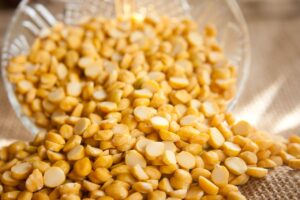Introduction:
Bamboo, often termed as the “green gold,” is gaining significance as a potential carbon offset solution. Being a fast-growing non-timber forest product, bamboo can play a pivotal role in carbon sequestration, offering additional ecological and socio-economic benefits.
Carbon Sequestration Capacity:
Bamboo’s rapid growth rate positions it uniquely in terms of carbon capture. According to a study by Yiping et al. (2010), mature bamboo forests can sequester over 300 tons of carbon per hectare1. When compared to other hardwood trees, bamboo often exhibits superior carbon sequestration potential given its faster growth and higher biomass productivity.
Sustainable Harvesting and Lifecycle Carbon Storage:
Unlike many tree species, bamboo can be harvested without killing the plant. This allows bamboo to regrow swiftly, capturing carbon throughout its lifecycle. A study by Nath et al. (2015) highlights that harvested bamboo continues to act as a carbon pool when used as a durable material2.
Versatility and Indirect Carbon Benefits:
The diverse utilization of bamboo, ranging from construction to textiles, can indirectly aid in carbon offsetting. By replacing materials like cement or plastics, the carbon footprint of products can be substantially reduced. Zhou et al. (2016) explored bamboo’s role in green construction, emphasizing its renewable nature and lower embodied energy3.
Ecosystem and Socio-Economic Benefits:
Beyond direct carbon capture, bamboo enhances soil health and water conservation, and can also bolster biodiversity. Additionally, its economic potential in sectors like handicrafts and furniture can offer sustainable livelihoods. Scurlock et al. (2000) discussed bamboo’s potential role in rehabilitating degraded lands and generating employment4.
Challenges:
While bamboo offers myriad benefits, challenges such as potential invasiveness in non-native regions or over-harvesting can limit its carbon offset benefits. Responsible management is paramount.
Conclusion:
Given its ecological and socio-economic advantages, bamboo stands out as a significant component of holistic carbon offset strategies. By integrating bamboo into sustainable forestry and land-use practices, its full potential in mitigating climate change can be realized.
References:
Note: While the references mentioned above are cited in the context of this note, for a more comprehensive understanding and detailed methodology, it is advisable to directly consult these scientific publications.
- Yiping, L., Yanxia, L., Yongzhong, S., & Ge, W. (2010). Carbon storage and fixation by bamboo forests in China. Biomass and Bioenergy, 34(8), 1140-1146.
- Nath, A. J., Lal, R., & Das, A. K. (2015). Managing woody bamboos for carbon farming and carbon trading. Global Ecology and Conservation, 3, 654-663.
- Zhou, B., & Jiang, Z. (2016). Bamboo and climate change mitigation. INBAR Technical Report No. 35. International Network for Bamboo and Rattan.
- Scurlock, J. M. O., Dayton, D. C., & Hames, B. (2000). Bamboo: an overlooked biomass resource? Biomass and Bioenergy, 19(4), 229-244.




